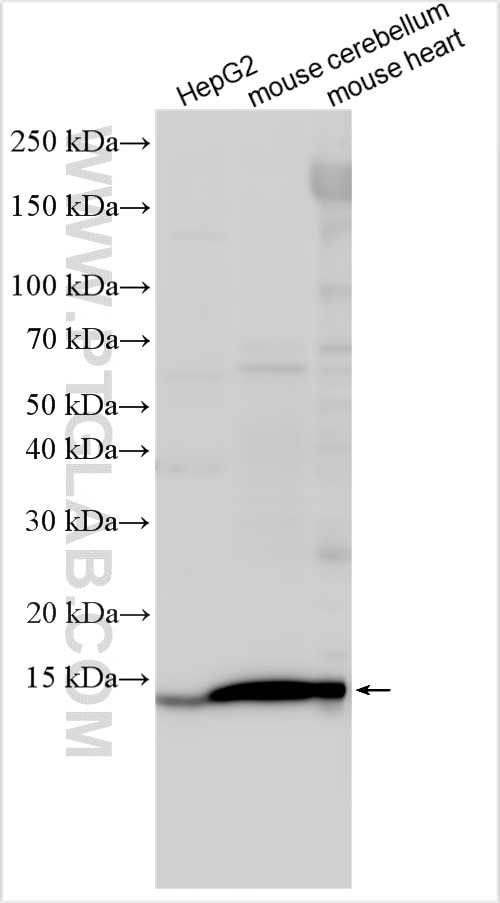Tested Applications
| Positive WB detected in | HepG2 cells, mouse cerebellum tissue, mouse heart tissue |
Recommended dilution
| Application | Dilution |
|---|---|
| Western Blot (WB) | WB : 1:500-1:1000 |
| It is recommended that this reagent should be titrated in each testing system to obtain optimal results. | |
| Sample-dependent, Check data in validation data gallery. | |
Product Information
20324-1-AP targets ISCA1 in WB, ELISA applications and shows reactivity with human, mouse samples.
| Tested Reactivity | human, mouse |
| Host / Isotype | Rabbit / IgG |
| Class | Polyclonal |
| Type | Antibody |
| Immunogen | ISCA1 fusion protein Ag14188 Predict reactive species |
| Full Name | iron-sulfur cluster assembly 1 homolog (S. cerevisiae) |
| Calculated Molecular Weight | 129 aa, 14 kDa |
| Observed Molecular Weight | 15 kDa |
| GenBank Accession Number | BC002675 |
| Gene Symbol | ISCA1 |
| Gene ID (NCBI) | 81689 |
| Conjugate | Unconjugated |
| Form | Liquid |
| Purification Method | Antigen affinity purification |
| UNIPROT ID | Q9BUE6 |
| Storage Buffer | PBS with 0.02% sodium azide and 50% glycerol, pH 7.3. |
| Storage Conditions | Store at -20°C. Stable for one year after shipment. Aliquoting is unnecessary for -20oC storage. 20ul sizes contain 0.1% BSA. |
Background Information
ISCA1, also named as HBLD2 and hIscA, belongs to the hesB/iscA family. It is involved in the assembly of mitochondrial iron-sulfur proteins. ISCA1 probably involved in the binding of an intermediate of Fe/S cluster assembly. ISCA1 plays an important role in both mitochondrial and cytosolic iron-sulfur cluster biogenesis, and a notable component of the latter is the interaction between ISCA1 and IOP1.
Protocols
| Product Specific Protocols | |
|---|---|
| WB protocol for ISCA1 antibody 20324-1-AP | Download protocol |
| Standard Protocols | |
|---|---|
| Click here to view our Standard Protocols |



